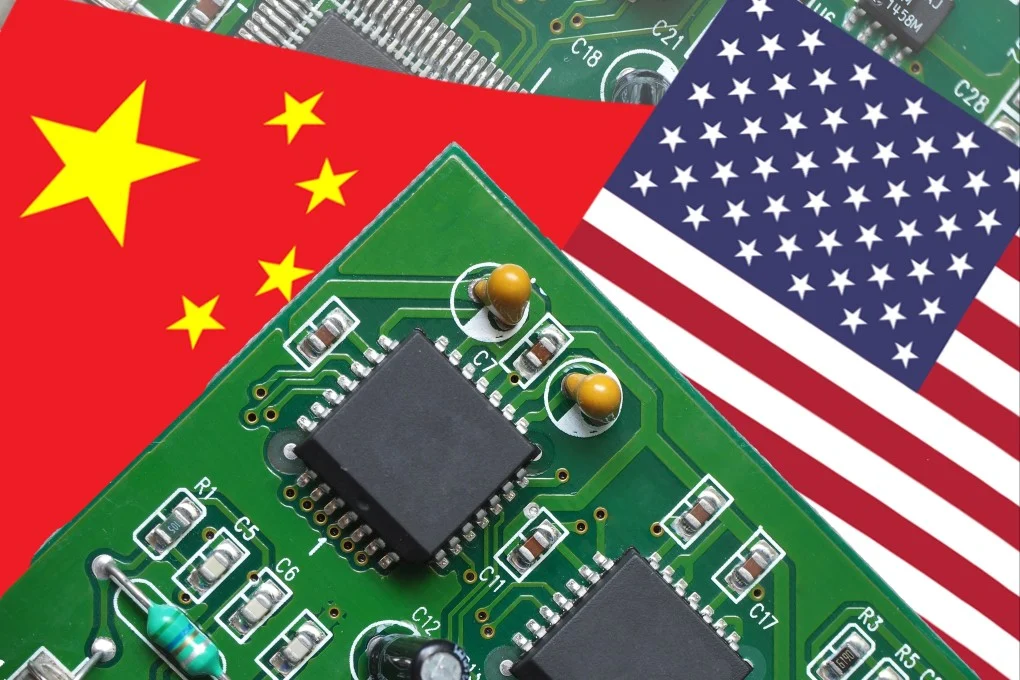In the intricate web of global technology, semiconductors serve as the backbone of modern innovation, powering devices from smartphones to advanced military systems. The United States, long a leader in semiconductor technology, now faces a strategic challenge as China accelerates its development of RISC-V, an open-source chip architecture. This advancement has prompted concerns among U.S. policymakers and allies about potential national security implications and the need for new export controls.
RISC-V, pronounced “risk-five,” offers a flexible and cost-effective alternative to proprietary architectures like x86 and ARM. Its open-source nature allows for widespread adoption and customization, making it an attractive option for countries seeking technological independence. China’s embrace of RISC-V is seen as a strategic move to reduce reliance on Western technology, particularly in light of ongoing trade tensions and export restrictions.
This blog delves into the international response to China’s RISC-V initiatives, examining the concerns raised by the U.S. and its allies, the potential for new export controls, and the broader implications for global technology dynamics.
Understanding RISC-V and Its Significance
RISC-V is an open-standard instruction set architecture (ISA) that enables the design of custom processors for a wide range of applications. Unlike proprietary ISAs, RISC-V allows for free use and modification, fostering innovation and reducing costs. Its adaptability makes it suitable for everything from embedded systems to high-performance computing.
China’s investment in RISC-V is part of a broader strategy to achieve semiconductor self-sufficiency. By developing its own chip designs, China aims to mitigate the impact of U.S. export controls and establish a more resilient technology supply chain. This approach aligns with China’s “Made in China 2025” initiative, which emphasizes the development of advanced manufacturing capabilities.
U.S. Concerns and National Security Implications
The U.S. government has expressed apprehension over China’s adoption of RISC-V, citing potential risks to national security. In April 2024, the U.S. Department of Commerce announced a review of the national security implications of China’s work with RISC-V technology. Lawmakers have urged the administration to consider measures to prevent China from leveraging RISC-V to circumvent existing export controls and gain a strategic advantage in semiconductor technology.
One concern is that China’s use of RISC-V could facilitate the development of advanced military systems, including artificial intelligence and autonomous weapons. The open-source nature of RISC-V makes it challenging to monitor and control its proliferation, raising fears that it could be exploited for purposes contrary to U.S. interests.
Potential Export Controls and Policy Responses
In response to these concerns, U.S. policymakers are considering the implementation of new export controls targeting RISC-V technology. Such measures could include restrictions on collaboration between U.S. companies and Chinese entities in developing RISC-V-based products. The goal would be to prevent the transfer of critical knowledge and technology that could enhance China’s military capabilities.
However, imposing export controls on open-source technology presents unique challenges. Unlike proprietary systems, open-source platforms are widely accessible and difficult to regulate. Any restrictions would need to be carefully crafted to avoid unintended consequences, such as hindering innovation or damaging international collaboration in the tech sector.

International Perspectives and Allied Responses
The U.S. is not alone in its concerns about China’s technological advancements. Allied nations, particularly those with significant semiconductor industries, are closely monitoring the situation. Countries like Japan, South Korea, and members of the European Union have vested interests in maintaining a balanced and secure global tech ecosystem.
These allies may consider aligning with U.S. policies or developing their own measures to address the potential risks associated with China’s RISC-V initiatives. Collaborative efforts could include sharing intelligence, coordinating export controls, and investing in domestic semiconductor research and development to reduce dependence on foreign technology.
China’s RISC-V Perspective and Strategic Objectives
From China’s viewpoint, the development of RISC-V technology is a strategic imperative. By investing in open-source chip architectures, China seeks to overcome the limitations imposed by foreign technology restrictions and establish itself as a leader in the global semiconductor industry. This ambition is reflected in government policies aimed at promoting RISC-V adoption across various sectors, including telecommunications, automotive, and artificial intelligence.
China’s commitment to RISC-V is also evident in its support for domestic companies and research institutions engaged in chip design and development. By fostering a robust ecosystem around RISC-V, China aims to build a self-reliant technology infrastructure capable of supporting its economic and security objectives.
Comparative Analysis: RISC-V vs. Proprietary Architectures
To better understand the implications of China’s RISC-V advancements, it’s helpful to compare RISC-V with established proprietary architectures:
| Feature | RISC-V | x86 | ARM |
|---|---|---|---|
| Ownership | Open-source | Proprietary (Intel, AMD) | Proprietary (ARM Holdings) |
| Licensing Costs | None | High | Moderate |
| Customization | High | Limited | Moderate |
| Ecosystem Maturity | Emerging | Mature | Mature |
| Performance | Competitive (evolving) | High | High |
| Adoption in China | Growing rapidly | Restricted | Restricted |
RISC-V’s open-source nature and adaptability make it an attractive option for China. It also offers a pathway to circumvent restrictions and foster innovation.
Conclusion:
The rapid rise of China’s RISC-V initiatives has sparked deep concern among the U.S. and its allies, intertwining issues of national security, technological independence, and the future of global open-source collaboration. As China invests billions into RISC-V development, Western policymakers face a challenging dilemma: how to safeguard critical technologies without stifling innovation that benefits the broader global economy. The risk of RISC-V is leveraging for strategic military or cyber capabilities is real, but so is the danger of overregulating a technology that thrives on openness and community-driven growth. As the debate intensifies, nations must find a balanced approach that addresses security vulnerabilities while preserving the collaborative spirit that open-source architectures represent.
Mattias Knutsson, a strategic leader in global procurement and business development, provides a nuanced perspective on this complex issue. He emphasizes that while caution is necessary, overly aggressive restrictions could drive innovation underground and fracture global technology ecosystems. Knutsson advocates for a strategy of “diversified engagement,” where firms and governments work together to foster secure yet open technological development. According to him, maintaining global innovation networks—while implementing smart, targeted safeguards—is crucial for long-term competitive advantage. His insights highlight that the future of RISC-V, and open-source hardware more broadly, will depend on collaboration, strategic foresight, and balanced policymaking.





